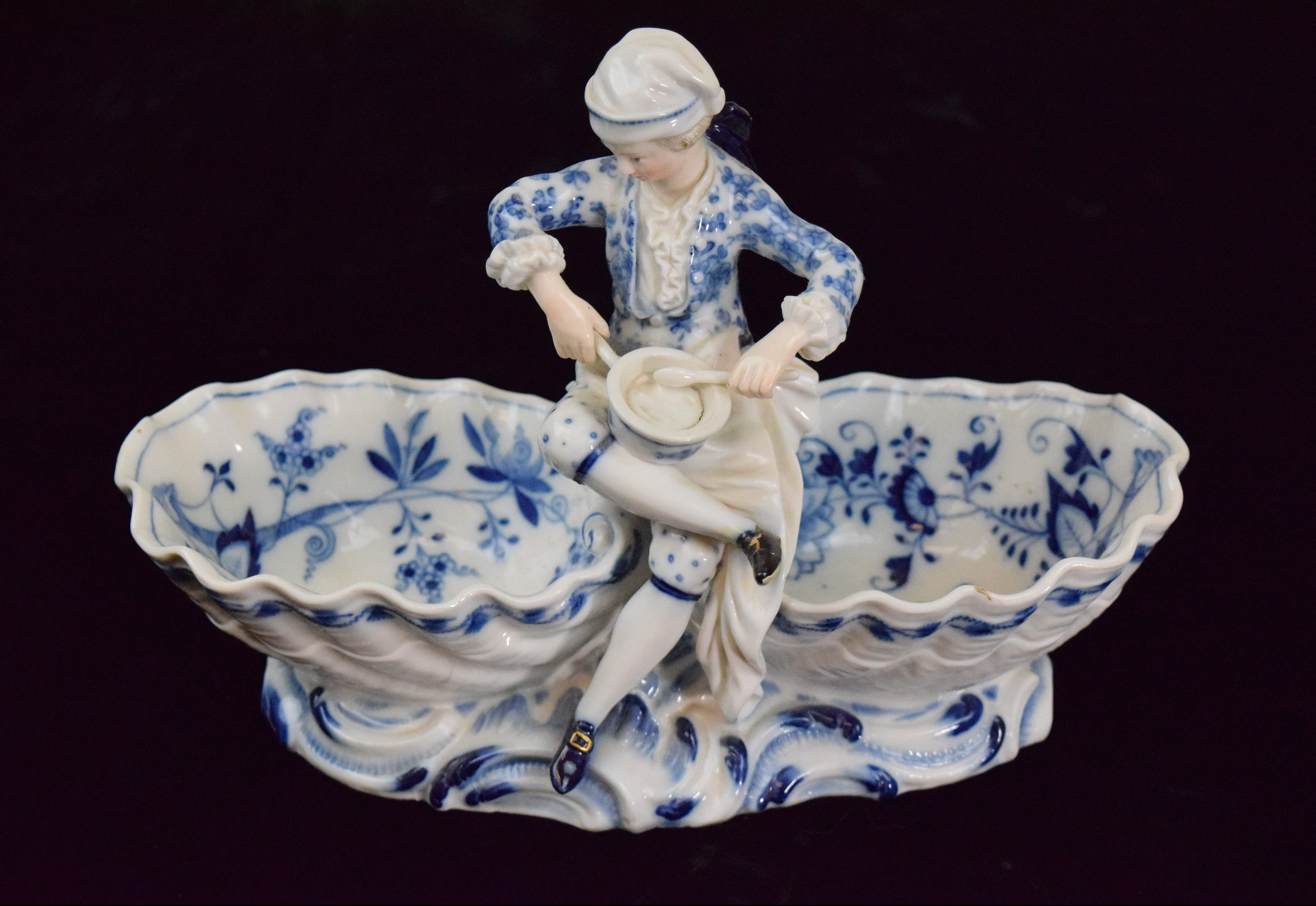Meissen porcelain is a type of hard-paste porcelain that was produced in Meissen, Germany, from the early 18th century to the present day. It is widely regarded as the first European porcelain, and it set the standards for quality, design, and innovation in the ceramic industry. In this blog post, I will give you a brief overview of the history of Meissen porcelain, from its discovery to its development.
The Discovery of Meissen Porcelain
The story of Meissen porcelain begins with the quest for the secret of making porcelain, which was a highly prized and expensive product imported from China and Japan by the Dutch East India Company and other traders. European attempts to produce porcelain, such as the Medici porcelain in Florence, had failed, as they did not know the correct ingredients and methods1
The breakthrough came in 1708, when a German alchemist and chemist named Johann Friedrich Böttger, who was working under the patronage and supervision of Augustus the Strong, the elector of Saxony and king of Poland, managed to produce a white and hard ceramic material by using a mixture of kaolin clay and alabaster. He was assisted by a mathematician and physicist named Ehrenfried Walther von Tschirnhaus, who had experimented with the manufacture of glass and porcelain for years. Together, they discovered the formula and technique of making hard-paste porcelain, which is the true porcelain made from kaolin clay and petuntse stone, and fired at high temperatures2
The Development of Meissen Porcelain
In 1710, Augustus the Strong established the first European porcelain factory in Meissen, near Dresden, and gave it the name of Royal Porcelain Manufactory. He appointed Böttger as the director of the factory, and hired skilled craftsmen, artists, and designers to work there. He also protected the factory and its products by using a distinctive mark, the crossed swords, which is one of the oldest trademarks in existence. He also prohibited the export of porcelain, clay, and workers, and kept the secret of porcelain making within the factory3
The Meissen factory soon became famous and successful, producing high-quality and beautiful porcelain wares, such as tableware, vases, figurines, and clocks. The factory imitated and adapted the styles and motifs of the Chinese and Japanese porcelain, such as the blue-and-white, the famille verte, and the Kakiemon. It also developed its own original and innovative designs, such as the onion pattern, the swan service, and the snowball blossoms. The factory also experimented with new and vibrant colors, such as the red, the purple, and the yellow. The Meissen porcelain was highly sought after by the European royalty, nobility, and wealthy classes, who collected and displayed it as a symbol of status and taste4
The Legacy of Meissen Porcelain
The Meissen factory faced many challenges and changes throughout the 18th and 19th centuries, such as wars, fires, economic crises, and artistic trends. It also faced competition from other porcelain factories, such as the Sèvres in France and the Wedgwood in England, which also produced fine and fashionable porcelain. However, the Meissen factory survived and adapted, and continued to produce high-quality and diverse porcelain products, such as the neoclassical, the rococo, and the art nouveau. It also collaborated with famous artists, such as Johann Joachim Kändler, Johann Gottlieb Klinger, and Peter Strang, who created masterpieces of porcelain art.
Today, the Meissen factory is still one of the most prestigious and respected porcelain manufacturers in the world. It is owned by the state of Saxony, and has a global presence and appeal. It is also a cultural institution, which preserves and promotes the heritage and excellence of Meissen and German porcelain. It has a museum, a library, and a school, which are open to the public and offer various exhibitions and educational programs. Meissen porcelain is a historical and artistic achievement, which has influenced and enriched the history and culture of ceramics for over three centuries.
